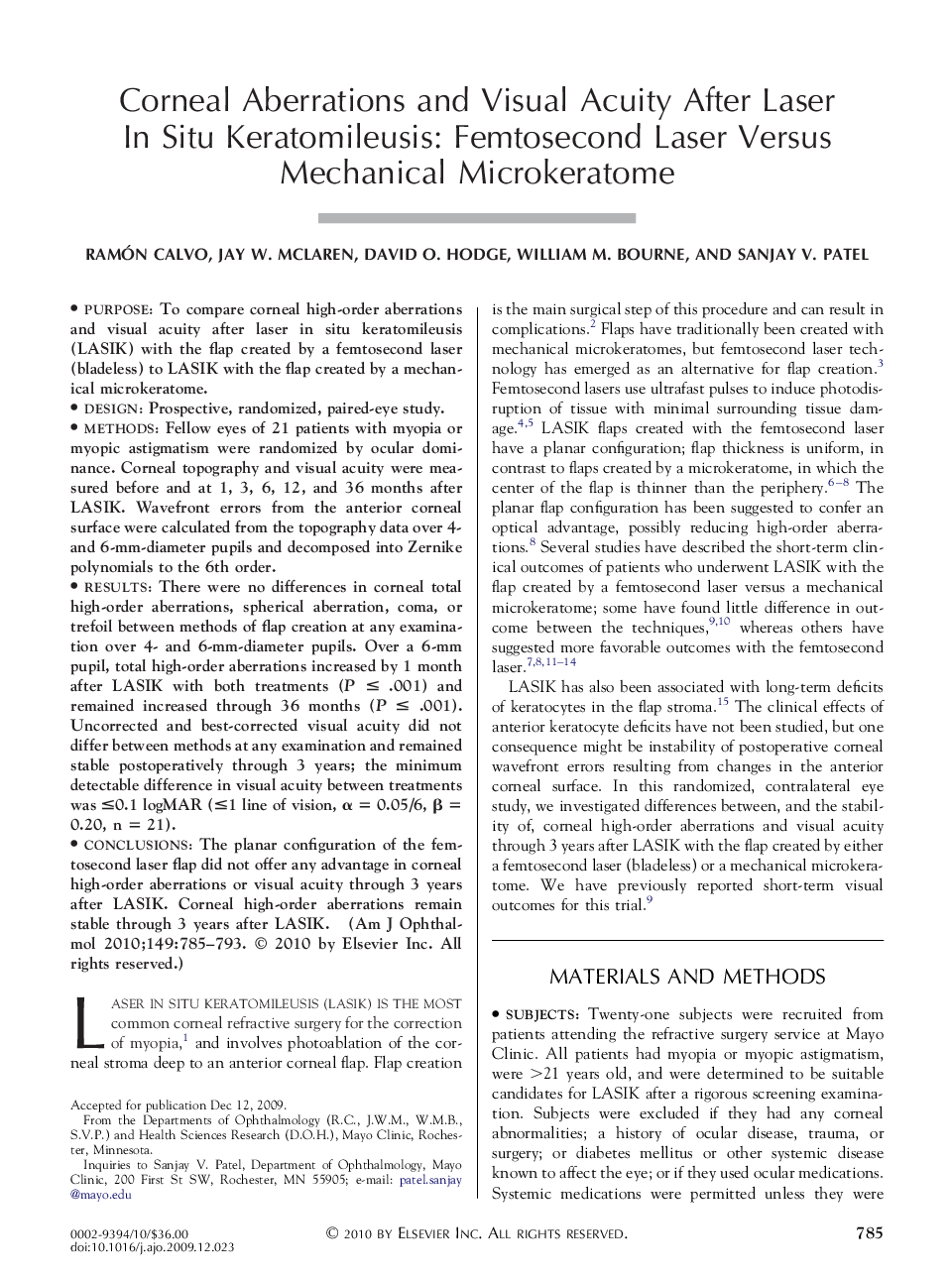| Article ID | Journal | Published Year | Pages | File Type |
|---|---|---|---|---|
| 4003902 | American Journal of Ophthalmology | 2010 | 9 Pages |
PurposeTo compare corneal high-order aberrations and visual acuity after laser in situ keratomileusis (LASIK) with the flap created by a femtosecond laser (bladeless) to LASIK with the flap created by a mechanical microkeratome.DesignProspective, randomized, paired-eye study.MethodsFellow eyes of 21 patients with myopia or myopic astigmatism were randomized by ocular dominance. Corneal topography and visual acuity were measured before and at 1, 3, 6, 12, and 36 months after LASIK. Wavefront errors from the anterior corneal surface were calculated from the topography data over 4- and 6-mm-diameter pupils and decomposed into Zernike polynomials to the 6th order.ResultsThere were no differences in corneal total high-order aberrations, spherical aberration, coma, or trefoil between methods of flap creation at any examination over 4- and 6-mm-diameter pupils. Over a 6-mm pupil, total high-order aberrations increased by 1 month after LASIK with both treatments (P ≤ .001) and remained increased through 36 months (P ≤ .001). Uncorrected and best-corrected visual acuity did not differ between methods at any examination and remained stable postoperatively through 3 years; the minimum detectable difference in visual acuity between treatments was ≤0.1 logMAR (≤1 line of vision, α = 0.05/6, β = 0.20, n = 21).ConclusionsThe planar configuration of the femtosecond laser flap did not offer any advantage in corneal high-order aberrations or visual acuity through 3 years after LASIK. Corneal high-order aberrations remain stable through 3 years after LASIK.
